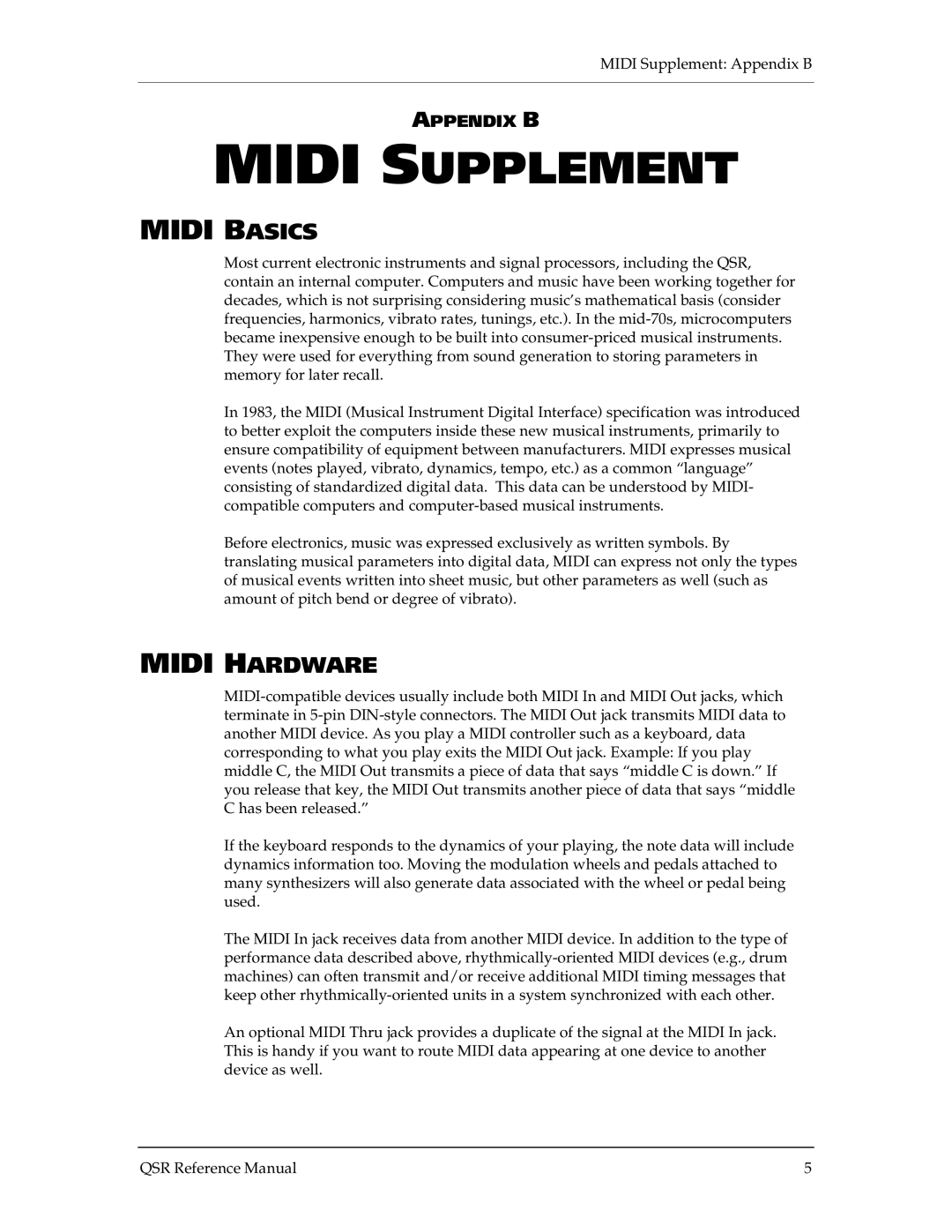
MIDI Supplement: Appendix B
APPENDIX B
MIDI SUPPLEMENT
MIDI BASICS
Most current electronic instruments and signal processors, including the QSR, contain an internal computer. Computers and music have been working together for decades, which is not surprising considering music’s mathematical basis (consider frequencies, harmonics, vibrato rates, tunings, etc.). In the
In 1983, the MIDI (Musical Instrument Digital Interface) specification was introduced to better exploit the computers inside these new musical instruments, primarily to ensure compatibility of equipment between manufacturers. MIDI expresses musical events (notes played, vibrato, dynamics, tempo, etc.) as a common “language” consisting of standardized digital data. This data can be understood by MIDI- compatible computers and
Before electronics, music was expressed exclusively as written symbols. By translating musical parameters into digital data, MIDI can express not only the types of musical events written into sheet music, but other parameters as well (such as amount of pitch bend or degree of vibrato).
MIDI HARDWARE
If the keyboard responds to the dynamics of your playing, the note data will include dynamics information too. Moving the modulation wheels and pedals attached to many synthesizers will also generate data associated with the wheel or pedal being used.
The MIDI In jack receives data from another MIDI device. In addition to the type of performance data described above,
An optional MIDI Thru jack provides a duplicate of the signal at the MIDI In jack. This is handy if you want to route MIDI data appearing at one device to another device as well.
QSR Reference Manual | 5 |
